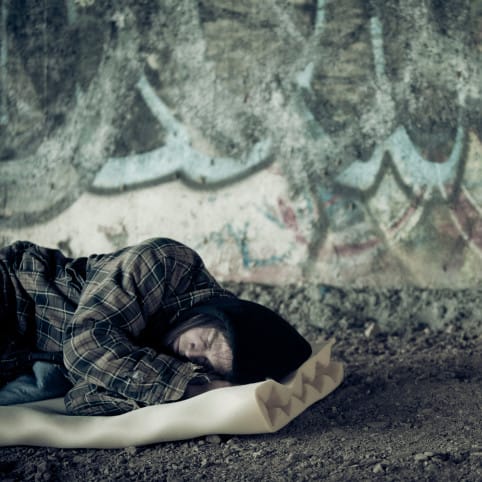Housing crisis closes the door on Victoria’s vulnerable
A shortage of affordable housing in Melbourne is giving few alternatives to homelessness and poverty to those most vulnerable, leading agencies say.


By JAMAL BEN HADDOU
A shortage of affordable housing in Melbourne is giving few alternatives to homelessness and poverty to those most vulnerable, leading agencies say.
With private rental charges rising and little growth in public housing, chief organisations fear the problem will only get worse for those experiencing financial hardship.
A joint submission on family violence, homelessness and affordable housing was presented to the Royal Commission into Family Violence last month.
Dozens of homelessness and housing organisations, including Justice Connect, are backing the submission, which says Victoria’s shortage of affordable housing is pushing people into homelessness and deterring victims from leaving violent relationships.
"Addressing Victoria’s shortage of affordable housing must be a priority for the Royal Commission into Family Violence and for the Victorian Government," the submission said.
Justice Connect homeless law manager Lucy Adams said the high demand on Melbourne’s public housing system was becoming increasingly problematic.
“We have about 34,000 people who are waiting for public housing and many of those people will never get to the top of that list,” Ms Adams said.
Public housing provides secure accommodation for people unable to afford private rental. It is especially designed for those who have recently experienced homelessness or are at risk of becoming homeless.
Leading homelessness organisations are urging for more public housing dwellings to be built.
A report released by Anglicare in April confirmed the worsening lack of affordability in the private rental market. For a single person on an age pension only 0.1 per cent of private rental homes in metropolitan Melbourne are affordable.
Only one home in Melbourne was found to be affordable for a single person with one child on a Newstart welfare allowance.
Victoria has the lowest funding and availability of public housing stock in Australia with only 3.4 per cent of homes classified as social housing dwellings.
Council to Homeless Persons spokeswoman Sarah Toohey said she was concerned about the lack of accommodation options for those at risk of poverty and homelessness.
“We haven’t been seriously investing in public housing for at least a decade. To keep up with population growth, we should be building around 2000 public housing dwellings a year but were not adding anything like that number,” Ms Toohey said.
One in four renters in Victoria are also experiencing rental stress, putting strain on their ability to pay for bills and food when most of their income goes towards housing costs.
“The things that people do to cope are cook one big meal and eat that for the entire week. They get financial aid from places like the Salvation Army to help with weekly food bills, so it hugely reduces people’s health and quality of life,” she said.
An analysis of the impact of the Federal Budget by the Council to Homeless Persons found the average waiting time for those on early allocation of public housing was expected to increase by 16 per cent in the next year.
“The strategy we need to see is investment in long-term affordable housing,” Ms Toohey said.





